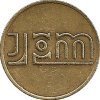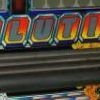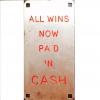Leaderboard
-
[[Template core/front/popular/memberRow is throwing an error. This theme may be out of date. Run the support tool in the AdminCP to restore the default theme.]]
[[Template core/front/popular/memberRow is throwing an error. This theme may be out of date. Run the support tool in the AdminCP to restore the default theme.]]
[[Template core/front/popular/memberRow is throwing an error. This theme may be out of date. Run the support tool in the AdminCP to restore the default theme.]]
[[Template core/front/popular/memberRow is throwing an error. This theme may be out of date. Run the support tool in the AdminCP to restore the default theme.]]
Popular Content
Showing content with the highest reputation on 10/08/21 in all areas
-
4 points
-
Hey daveo, to answer your question properly, we did have our own operations that was ostensibly to quietly test our gear and more importantly the machinery inside rather than the games, after all a canvas can have any picture painted on it and a system can have any game dropped on it! But After Sales supported the engineers in the field and our number was in the cabinet and on the manuals and schematics as I remember (?) no matter what company they were with. We we would take calls from techs to assist them in their endeavours and many remained friends over the years.4 points
-
Thinking about it I don’t think you can it’s built in on that era of machines as autohold is a copyrighted feature of the machine, it’s printed on the glass.. edit> just checked my lucky strike machine and that auto holds and there’s nothing I can do to change it...2 points
-
And there's more..... Electro Mechanical (EM) - Versus - Stepper Reel Unit (SRU) As already mentioned I had succeeded in filling a vacancy in JPM's After Sales Service and had a shiny Blue Ford Cortina estate. It was one of the only estates that would get a machine in the back with the seats down, sort of guaranteed to kill you if you were rear ended but I digress. (another welshman). Work days were now in a 3 piece suit as we were ‘an extension of Sales’ as Ernie Beaver, the sales director at JPM let us know on frequent occasions. This was a new venture for me and involved, amongst other duties, taking calls from technicians in field who were stuck with a problem and couldn’t fix the machine and those were the calls we enjoyed taking! It was always a pleasure to speak with a like minded engineer who wanted to fix a problem and needed another pair of hands to assist so to speak. We would pore over the schematic in the office asking the engineer to try various things and offering our suggestions until we eventually nailed the issue! Believe me the last thing we wanted was to have an engineer left in the field with a machine that was still OOO as we called it and no idea of how to fix it. In fact several of us had been know to jump in the car after work and drive to site to be there for the next day and check out the problem ourselves if the answer was not found. This was especially true in the case of a new machine just in case it was a production issue which would be replicated. We sometimes took calls from executives of influential Companies pointing out the shortcomings of a design or a flaw in the product and demanding that we come and ‘sort things out’. Both these types of calls resulted in us often taking a two pronged approach, perhaps going to site to see the issues first hand as a PR effort, but also checking on the production facility and seeing if we could see the problem first hand and persuade Dev or production to change things. We were expected to man exhibitions stands as well in such places as Alexandra Palace, back in the day before it burnt down, Olympia and also the NEC. That last venue based near Birmingham was used only once and was the stage setting for the culmination of an important (head banging) period in JPM’s history and proved to be a turning point. More of that later Lets just step back over 40 years here Everything is no longer in black and white but it’s still sepia coloured. It’s early evening, it’s raining, and a machine is out of order. The call was made earlier in the day and the engineer turns up. First thing he does is light a fag and ask the landlord about the nature of the problem and checks out the machine. Let’s not forget before we go any further, there is no test routine per se! So, drag the machine away from the wall, create a space around the back to try and get some working space, open the beer sticky back door to the tobacco stained inside, perhaps kneel in the beer soaked carpet and wait for the usual comments from the crowd. “Ooo it’s like a telly in there,” “look at all those wires,” “can you make it win for me,” “come to stop it paying out have you?” And dozens of other well know comments He’s heard them all a hundred times If it’s payout related it’s easy, get some credit, move the reels to a payout position, hold them, hit start, wait for the game to finish, payout should happen, simples. More game related issues? He played until it came up. But then of course there was a schematic supplied with every machine and furthermore most canny engineers had a folder with the latest schematics in. By looking at the schematic, cycling the machine and following what should happen the engineer could trace the circuit and find the faulty component and here is the big difference between those days and today or at least when I finished in the industry and more’s the pity . He either went back to the car or delved in his tool box and pulled out a micro switch, a relay, perhaps even a timer motor. He might even look at the schematic and in the case of a relay related fault, check out if the contact was broken or pitted and perhaps search for another that didn’t utilise that contact or open the relay and even abrade the contact. Whatever it took. The point is in the vast majority of cases, unless there was vandalism, fire, or some other physical issue the engineer fixed the machine. He was proud of that fact, he was known for that trait. Of course with the introduction of the electronic systems many engineers, well in those days anyway, became worried. And rightly so, but their fears had to be allayed. I had already been, quite literally, "sent to Coventry" as the one person who was prepared to repair a new machine on site. The first breakdown of JPM's prototype electronic machine, the Each Way Nudge was in Thomas's Showboat Arcade in Coventry. I had a spare board with me obviously but I found that a transistor had blown and although I wasn’t prepared to actually de-solder the defective one, I scrunched it up with a pair of pliers and soldered the new one on to the legs of the old one. ‘JD’ as we say. (Job done) Lets not forget it wasn’t LSI in those days and there were many discrete components on the board. Crude?………Yes! Effective?….Definitely! Happy?……..Ecstatic! This first “repair” of the electronics in an Electronic machine on site was no small matter and was deemed as the crossing of a major hurdle for the company. I can already hear the snorts of derision here, and I don’t blame you guys, but try and figure that this was all new ground and there was a lot riding on this. In itself it proved unquestionably that the product ‘could’ actually be repaired by anyone (gee thanks), a fear that everyone had borne since the inception of the product. In practice of course (it has to be said) that the reality proved to be a lot different. The electronics system was without question more reliable. However with the delivery of the new machines and the inevitable issues with peripherals still cropping up, many of our customer's site engineers all over the country were desperately trying to fix broken bulbs etc, on this initial batch of machines by taking out (aka ripping out) the controller and ordering a replacement part in sheer terror of the unknown. This was because they had lost the traditional testing or ‘exercising’ methods that they had learnt over many years on the electro mechanical machinery. They did not read the manual, I mean what real man ever reads a manual! All of the calls to After Sales were recorded on a ‘Call Log’ and the vast majority that started the line with EWN (Each Way Nudge) had the immortal phrase RTFM written against them They didn’t know the machine could be exercised via a test routine. Engineers were far more used to robust systems and were playing havoc with the more delicate connectors, which with later hindsight admittedly were not up to the job. It became obvious to everyone that the industry would need to educate these guys, or this product and the very future of JPM and the massive investment already made would in turn fail. It goes without saying that the success of a product meant it was taking more money than any other machine and an old adage by Mick Foster of Associated Leisure was that a charity box took more money than a dead fruit machine. Due to the previously mentioned mind set it seemed that every fault was being blamed on the new technology and the product was getting bad press. JPM quickly came to realise that it was fear and ignorance as much as anything else that was fuelling the transplant epidemic which itself was introducing the aforementioned damage to connectors coupled with the huge number of circuit boards being returned with NFF but damaged connectors. So after devising a training programme with Charles Weeks and several other colleagues we went around all the ‘majors’ in the Industry pointing out how the product could best be serviced, exercised and how to fault find! Often this was on a shift by shift basis as Engineers would be on call out Rotas. My colleagues and I were tasked with travelling the length and breadth of Britain and eventually much of Europe, setting up training road shows in Hotels, Village halls, Cinemas in fact anywhere that could hold 20 or more engineers and a few machines for them to work on. I was promoted (?) to Training Officer and this constant exposure ensured that my face was well know throughout the industry. Due to my experiences I was eventually offered the job as After Sales Service Manager. Bob Old had left the role as my manager and moved over to open a new venture that JPM had entered into, supplying spares to the industry for our competitors products as well as our own. Bob Old eventually left JPM and went on to work in a Sales role for Aristocrat in London and then Australia and became truly successful in that role. So I inherited the Spare sales team as well He unfortunately passed away a few years ago. RIP Bob you taught me how to drink!2 points
-
You probably already know this frank but one the old team retired last year(he’s in that JPM T-shirt picture) https://www.coinslot.co.uk/2020/10/30/robert-higgins-retirement/1 point
-
1 point
-
Flick all the switches the other way, I am 99% sure you can disable auto hold. Bare in mind some software versions did not have the same features and options and I know dip switch settings can be different from advertised.1 point
-
Did JPM operate machines, or were these customers' technicians?1 point
-
Just looked at mine and it’s the same as yours,and I can’t see the dip switch settings on my board as it’s away being repaired.sorry chap.1 point
-
Your bank 1 switches don’t look right 3x ordinary game 2x nudge 2x super series! I’ll look at mine for you.1 point
-
1 point
-
Hi, This is a pleasant surprise. I was looking for an electro mechanical schematic for quite a while and came across a member on Ebay who prompted me to look at this forum. Have to admit I didn't realise the interest there was in older machine and gaming machine history. It was startling to see some of the TSB's that I sent out over the years and look at the print face being dot matirx or even 'golf ball' print heads. Being so close to JPM from its inception I have some photos and tales which perhaps some might find interesting so I will dig them out Anyway big thank you to riche100 for the pdf and look forward to perhaps getting a paper copy one day. Have a good one! Frank Bird1 point
-
JPM would have been no different to most companies that is sold by the original founding members.The new owners want a quick return on the investment along with bringing their own people in which more than not upsets the apple cart(staff get pissed off and leave or are pushed out the door). As said before I have seen this a few times and usually more than 50% of staff are gone within 2 years.1 point
-
Yep you can't blame them for that and so often they are given promises regards the company and workforce that aren't kept or aren't enforceable, especially if the company gets sold on again in a short time. I found out years after I Ieft that the MD of PCP had a huge stroke I believe just weeks after the doors shut for the last time and spent the rest of his life in a care home. Carpe diem....1 point







